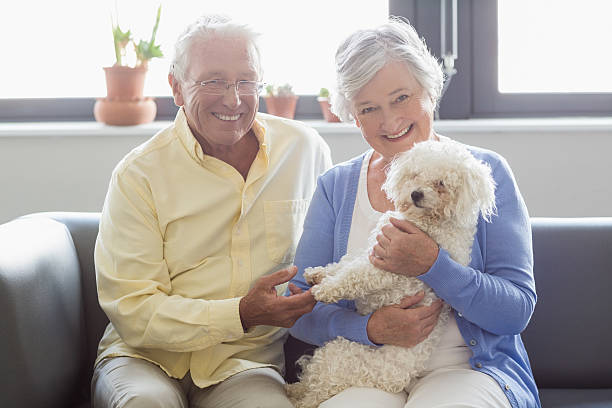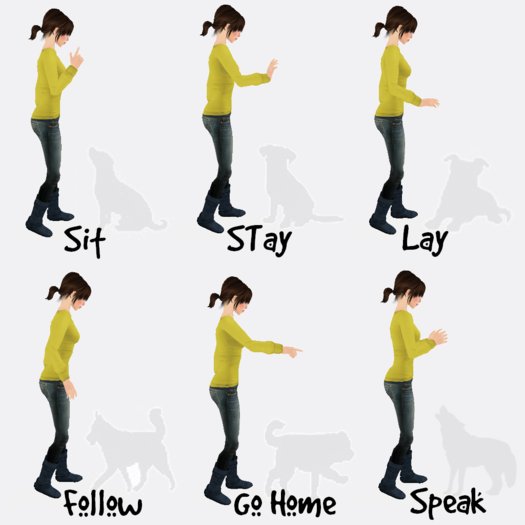It can be daunting and exciting to bring a pet into your home. Even if you already have an animal, having a pet can bring up many unanswered questions.
Is it really possible for dogs to be so different from cats? Can a bird be allowed to fly around the house without being controlled? Are fish required to see a particular type of vet?
We did some research and compiled tips on how to care for animals. Our focus was on household pets. This guide will help you feel at home with your pet, whether it’s your first time or if you have had pets in the past.
The guide to caring for animals
You can follow basic guidelines no matter what furry friend or pet you have. Look through the article to identify your species and get your tips.
Overview of taking care of dogs – a canine companion
Basics – Make sure you have high-quality dog food in your home, especially if you bring a puppy home. The American Society for the Prevention of Cruelty to Animals points out that puppies usually need three to four meals daily. You should always have clean, fresh water available.
You must ensure your pet is safe. You will need a temperature control system to ensure your dog is comfortable outdoors. This could include access to warm water in the summer and a warm shelter in winter. Indoor and outdoor dogs should have a microchip or a collar that identifies them.
You should also remember a few other important things. You should have a routine for grooming your dog and allow plenty of time to walk. Experts agree that dogs should be taken for a walk at a minimum of once per day, and this is independent from bathroom breaks.
Veterinary Care: All puppies should visit the veterinarian at least once a month. Expect a physical exam, as well as testing for worms. It is a great time to discuss vaccinations and when spay/neuter should be done. These procedures can be performed starting at eight weeks old.
Older dogs who are newly adopted will receive a similar initial vet visit. Bring along any medical records. It is common for shelter pets to have a partial medical history. So schedule your appointment sooner than you think.
You should take your dog in for an annual exam after he has had his last round of vaccines at four months. You should also be on the lookout for any signs indicating health problems requiring immediate attention. There are many signs of something wrong, including weight loss, mood changes, or a lack of energy.
Cat care for feline friends
Basics – While some cat owners let their pets roam the streets, the Humane Society of the United States suggests keeping your feline friend inside to ensure their safety. It is important to identify your cat, either by microchip or collar. If your cat does wander off, ID will increase the likelihood of them safely returning home.
You’ll need to decide which feeding strategy is best for your cat. Some felines can eat all day. Some cats are more likely to overeat and require a regular feeding schedule, such as two meals per day. Make sure to read the nutrition label carefully to ensure that there is a balanced amount of fats and proteins. Ask your veterinarian for any food information.
There are some essential pieces of equipment to equip your cat’s home fully. A litter box, scratching post, nail clippers and cat toys are all necessary. Declawing is an option, but most veterinarians will only recommend it if the cat can resist furniture.
Regular grooming is a great idea. While they can do it all themselves, many felines love to be brushed. Regular grooming can help reduce hairballs.
Veterinary Care: The guidelines for cats are the same as those for dogs. After bringing your feline friend home, you should visit a veterinarian to check for worms. Also, make sure that you have all the necessary vaccinations. Like dogs, cats can be spayed/neutered at eight weeks.
Regular check-ups should be done every year for adult cats. Some vets recommend even twice a year. Routine visits are designed to keep your cat healthy and take only 30 minutes.
Keep in mind that many cats find vet visits stressful. Getting your cat used to the carrier before you go is a good idea.
Helping those who have avian pets by taking care of them
Basics Properly caring for and socializing with a bird can be more difficult than one might think. According to the Association of Avian Veterinarians, it is a good idea for your bird to be kept in an area with many family activities and human interaction.
You should ensure that you have enough toys, perches and some cage liner papers. Access to water is essential for birds in order to bathe. Some birds will take care of their baths themselves, although you might need to mist the water to encourage this behavior.
When deciding whether to clip your bird’s wings, take some time to think about the environment in which they live and what their needs are. Your pet will only be able to fly freely if there are enough windows or ceiling fans in your home. Some birds require more exercise to maintain a healthy weight.
Although birds are natural grazers, it is relatively easy to feed them. However, a healthy diet requires more than just nuts and seeds. It’s better to feed your bird vegetables and pellets.
Veterinary Care: It is important to find a qualified veterinarian in advance if your pet requires special care. To make sure that everything is in order, bring your new bird in as soon as possible. Then, keep an annual check.
Birds can hide injuries and illnesses very well, so pay attention to behavioral or physical changes. When in doubt, schedule an appointment.
Fish care for water-bound friends
Basics Fish are simpler than other animals in certain ways. However, there are some details you may need to be made aware of. PetMD explains that fish cannot know when it is time to stop eating. You need to be careful not to overfeed your fish. Most commercial pellets or flakes are made to meet the nutritional needs of fish.
You can make the tank as simple or as elaborate as you like, as long as it has water, a filter and a heating system. You will also need to clean your tank, replace water as necessary, and maintain a safe pH. Saltwater fish aquariums will require additional equipment and maintenance. You might consider starting with freshwater fish.
Veterinary Care: Although fish might not require as much care as other animals they can still get sick. If you notice changes in behavior, appetite, or general discomfort, it is time to make an appointment.
A simple exam and some diagnostic tests can usually diagnose the problem. Infectious diseases and poor water quality are common causes of fish health problems. It is important to maintain a clean environment.
Helping reptile owners with snakes, snakes and frogs
Basics Reptiles are two distinct classes of animals but are collectively called herptiles. To maintain proper temperature regulation, these cold-blooded animals require habitats that have heating elements. To find the best terrarium habitat for your pet, do some research.
While some herptiles are happy to eat commercial pet food, others need fresher food. These could be fruits, vegetables, insects, or small rodents. For example, snakes will often eat chicks or mice. Ask your local pet shop about the products they offer and make sure you research your pet’s nutritional requirements.
Reptiles and amphibians, like fish, need to have their habitats regularly. Daily maintenance will include wiping up spills and removing any food that has not been eaten. Weekly cleaning will be required. To ensure your pet’s safety while you clean, having a second terrarium is a good idea.
Veterinary Care: Some mixed-animal vets will treat reptile and amphibian patients. However, others won’t. The Find A Vet Page of the Association of Reptilian and Amphibian Veterinarians may help you find a qualified professional.
You are surprised that your herptile requires an annual veterinary visit. If something is unusual, your vet may request imaging or testing.
Tips for small mammals–tips to those who have tiny pets
Basics: These small mammals, such as rabbits, mice and gerbils, are great choices for parents who want to bring a pet into their home with children. Owners don’t have to spend as much time or money on these animals as if they were bringing home a dog or cat. However, even small mammals require care and attention.
First, you will want to choose a cage that suits your pet’s needs. The size and accessories of the cage will vary depending on the animal. Exercise wheels are an excellent option for small mammals, especially hamsters. Chew toys are a great option to prevent your pet from chewing on their food or cage.
Small mammals are accustomed to eating fruits, vegetables, and pellets. However, you must do your research on the best diet for your pet. The nutritional needs of small mammals can be more varied than you might think. If you have any questions, it is a good idea to contact your veterinarian.
Veterinary Care: Like all other animals, small mammals should be seen by a vet as soon as they arrive home. Spaying or neutering is a good idea to ensure your pet’s health. You should ask about vaccinations.
Not all small-animal practitioners are trained to work with gerbils, Guinea pigs and other small animals. You may need to find a specialist for some of these exotic pets.
Offer the best care for your animal friends
The first step in properly taking care of an animal is to welcome them into your home. To keep your pet happy, you must also address their nutrition, habitat, as well as everything else. A relationship with your veterinarian is the best way to ensure that you are meeting your pet’s needs.
You might be curious about the work of veterinarians after all this talk about animal care. They don’t just care for cute animals. Read our article “What is a Veterinarian?” to learn more about these medical professionals. The Role of Animal Doctors.

































